Themed collection 2022 Journal of Materials Chemistry Lectureship shortlisted candidates

Scientific writing and publishing for early-career researchers from the perspective of young chemists
This editorial provides suggestions on scientific writing from the perspective of early-career chemists to facilitate the writing process and provides relevant resources for early-career researchers in preparing their first manuscripts.

J. Mater. Chem. A, 2021,9, 18674-18680
https://doi.org/10.1039/D1TA90183D
The versatility of the dynamic hydrogen bubble template derived copper foam on the emerging energy applications: progress and future prospects
This review highlights the challenges and scope of the electrodeposited copper foam nanoarchitecture and its unique properties for various energy applications.
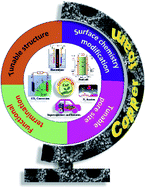
J. Mater. Chem. A, 2022,10, 13589-13624
https://doi.org/10.1039/D2TA01355J
Multi length scale porosity as a playground for organic thermoelectric applications
Porous conducting polymers are intriguing heat harvester candidates. This review focuses on the different strategies to vary the porosity range (from micro- to macro-pores) and their impact on thermoelectric properties.
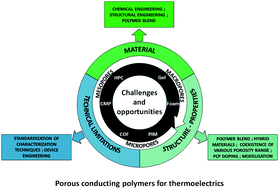
J. Mater. Chem. C, 2021,9, 10173-10192
https://doi.org/10.1039/D1TC02331D
2D molecular crystal lattices: advances in their synthesis, characterization, and application
2D molecular crystal lattices form a compelling class of 2D materials with synthetically-tunable properties and the potential to spawn a new generation of devices for optoelectronics and energy sustainability.
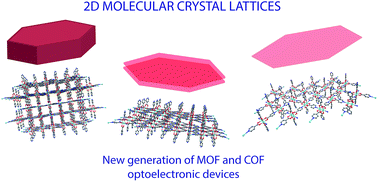
J. Mater. Chem. A, 2019,7, 23537-23562
https://doi.org/10.1039/C9TA06534B
The bifunctional volcano plot: thermodynamic limits for single-atom catalysts for oxygen reduction and evolution
Based on the “bifunctionality index”, which can be both measured and calculated, we elaborated a joint volcano plot for O2 reduction and evolution. The plot shows how scaling relations limit the bifunctional performance of single-atom catalysts.

J. Mater. Chem. A, 2022,10, 5937-5941
https://doi.org/10.1039/D1TA08366J
Platinum-free photoelectrochromic devices working with copper-based electrolytes for ultrastable smart windows
Designing smart windows with carbon and copper replacing platinum and iodine: stability, efficiency and sustainability at the same time.
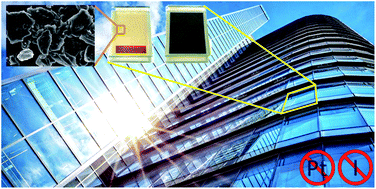
J. Mater. Chem. A, 2021,9, 19687-19691
https://doi.org/10.1039/D1TA03544D
Importance of multimodal characterization and influence of residual Li2S impurity in amorphous Li3PS4 inorganic electrolytes
Multimodal techniques are required to characterize amorphous Li3PS4 (LPS).
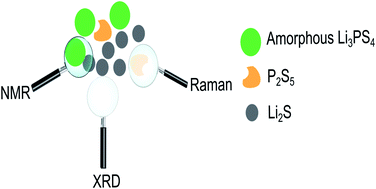
J. Mater. Chem. A, 2021,9, 19637-19648
https://doi.org/10.1039/D1TA02754A
Tunable nano-interfaces between MnOx and layered double hydroxides boost oxygen evolving electrocatalysis
Nano-interfaces between MnOx islands and NiFe layered double hydroxide (LDH) nanosheets were tuned using atomic layer deposition thereby enhancing oxygen evolution activity.
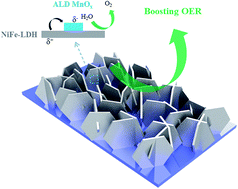
J. Mater. Chem. A, 2018,6, 21918-21926
https://doi.org/10.1039/C8TA07508E
Synthetic control of structure and conduction properties in Na–Y–Zr–Cl solid electrolytes
In this study, the relationship between structure, cation disorder and Na-ion conduction properties is elucidated in a series of Na3−xY1−xZrxCl6 solid electrolytes.

J. Mater. Chem. A, 2022,10, 21565-21578
https://doi.org/10.1039/D2TA05823E
Self-healable dynamic poly(urea-urethane) gel electrolyte for lithium batteries
Hindered urea bonds are introduced as self-healing units in a polymer electrolyte for Li-metal batteries. Differently from standard commercial separators, the poly(urea-urethane) system works for hundreds of cycles after several damage/healing steps.
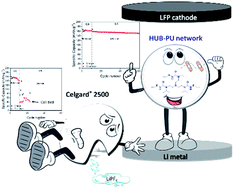
J. Mater. Chem. A, 2022,10, 12588-12596
https://doi.org/10.1039/D2TA02239G
Na2.4Al0.4Mn2.6O7 anionic redox cathode material for sodium-ion batteries – a combined experimental and theoretical approach to elucidate its charge storage mechanism
Al substitution and subsequent Na excess in Na2Mn3O7 were achieved by a ceramic method, realizing the high-performance Na2.4Al0.4Mn2.6O7 oxygen-redox cathode for Na-ion batteries. A comparison between the two cathodes revealed the role of Al doping.
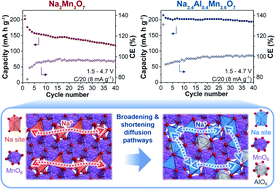
J. Mater. Chem. A, 2022,10, 7341-7356
https://doi.org/10.1039/D1TA05137G
Local environment rigidity and the evolution of optical properties in the green-emitting phosphor Ba1−xSrxScO2F:Eu2+
(Ba1−xSrx)0.98Eu0.02ScO2F produces a tunable emission from cyan to green upon Sr2+ substitution. Ab initio molecular dynamics simulations revealed that Sr2+ weakens the local rigidity lowering the efficiency and thermal stability of the phosphors.

J. Mater. Chem. C, 2022,10, 2955-2964
https://doi.org/10.1039/D1TC05411B
Modulating hardness in Sc2(Ru5−xTMx)B4 through empirical considerations and computational analysis
Electron density, Fermi level position, and chemical bonding are essential markers when developing high hardness complex borides.
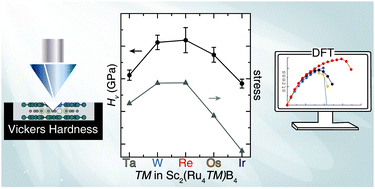
J. Mater. Chem. C, 2022,10, 1488-1497
https://doi.org/10.1039/D1TC05320E
A comparative study of Bi, Sb, and BiSb for electrochemical nitrogen reduction leading to a new catalyst design strategy
The formation of a BiSb alloy develops partial charges on the surface, enhancing N2 adsorption and NH3 production.
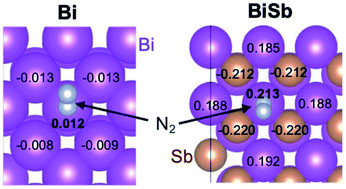
J. Mater. Chem. A, 2021,9, 20453-20465
https://doi.org/10.1039/D1TA05327B
Microstructural origin of selective water oxidation to hydrogen peroxide at low overpotentials: a study on Mn-alloyed TiO2
Mn-alloyed TiO2 coatings prepared by atomic layer deposition (ALD) and annealing acheived stable two-electron selective water oxidation to produce hydrogen peroxide, where the desired products require thermodynamically unfavorable pathways.
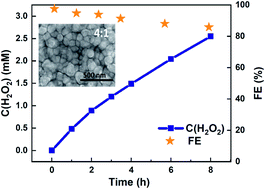
J. Mater. Chem. A, 2021,9, 18498-18505
https://doi.org/10.1039/D1TA05451A
Defining sulfonation limits of poly(ether-ether-ketone) for energy-efficient dehumidification
Unprecedented water vapor uptake of 320% was demonstrated with SPEEK at an unexpectedly low degree of sulfonation of 19% due to the high S–S distance.

J. Mater. Chem. A, 2021,9, 17740-17748
https://doi.org/10.1039/D1TA03690D
Molecular engineering of high-performance nanofiltration membranes from intrinsically microporous poly(ether-ether-ketone)
Poly(ether-ether-ketone) obtains intrinsic microporosity with spirobisindane, Tröger's base, and triptycene contorted structures for organic solvent nanofiltration.
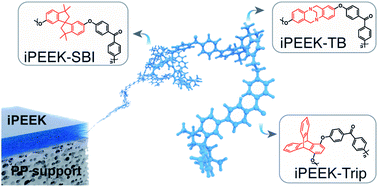
J. Mater. Chem. A, 2020,8, 24445-24454
https://doi.org/10.1039/D0TA08194A
The origin of chemical inhomogeneity in garnet electrolytes and its impact on the electrochemical performance
The intrinsically defective nature of garnet-type electrolytes is revealed, probing the chemistry of the surface, grains and grain boundaries.

J. Mater. Chem. A, 2020,8, 14265-14276
https://doi.org/10.1039/D0TA04974C
Electrochemically customized assembly of a hybrid xerogel material via combined covalent and non-covalent conjugation chemistry: an approach for boosting the cycling performance of pseudocapacitors
A universal approach for improving the cycling stability of pseudocapacitors is demonstrated via combined covalent and non-covalent conjugation chemistry followed by unique in situ electropolymerization of an organic–inorganic hybrid xerogel material.
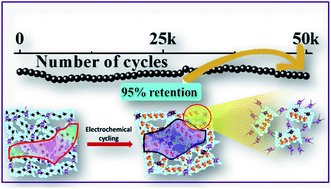
J. Mater. Chem. A, 2020,8, 6740-6756
https://doi.org/10.1039/D0TA02477E
Single-phase Ni5P4–copper foam superhydrophilic and aerophobic core–shell nanostructures for efficient hydrogen evolution reaction
A facile route for electrochemical synthesis of single-phase Ni5P4 on copper foam results in a core-shell nanostructures catalyst for the efficient generation of hydrogen with a very less overpotential and excellent stability at high current density.
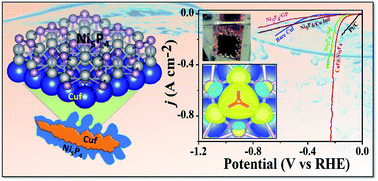
J. Mater. Chem. A, 2019,7, 23989-23999
https://doi.org/10.1039/C9TA06729A
Hydrogen evolution activity tuning via two-dimensional electron accumulation at buried interfaces
The buried electrocatalytic interfaces between bimetallic sulfide nanosheets and ALD TiO2 coatings achieved remarkable HER activity improvement, offering a general strategy for improving the charge-transfer kinetics of an electrocatalytic system.
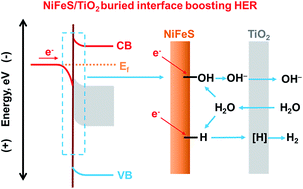
J. Mater. Chem. A, 2019,7, 20696-20705
https://doi.org/10.1039/C9TA07123G
Graphene oxide–polybenzimidazolium nanocomposite anion exchange membranes for electrodialysis
Reaching beyond the upper limits of electromembrane desalination processes with novel graphene-based nanocomposite anion exchange membranes.
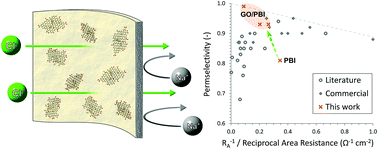
J. Mater. Chem. A, 2018,6, 24728-24739
https://doi.org/10.1039/C8TA09160A
Photomediated oxime ligation as a bioorthogonal tool for spatiotemporally-controlled hydrogel formation and modification
Biocompatible, synthetic hydrogels were formed and modified by photomediated oxime ligation with full spatiotemporal control.
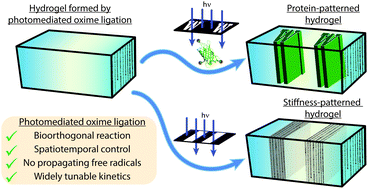
J. Mater. Chem. B, 2017,5, 4435-4442
https://doi.org/10.1039/C6TB03400D
About this collection
This collection showcases some recent articles by some of the shortlisted candidates for the 2022 Journal of Materials Chemistry Lectureship award. We received numerous excellent candidates and would like to highlight the shortlisted candidates by compiling some of their recent works from Journal of Materials Chemistry A, B and C.
Please note that we have only included articles by individuals who have opted in to having their names published in this recognition.
Congratulations to all our shortlisted candidates!